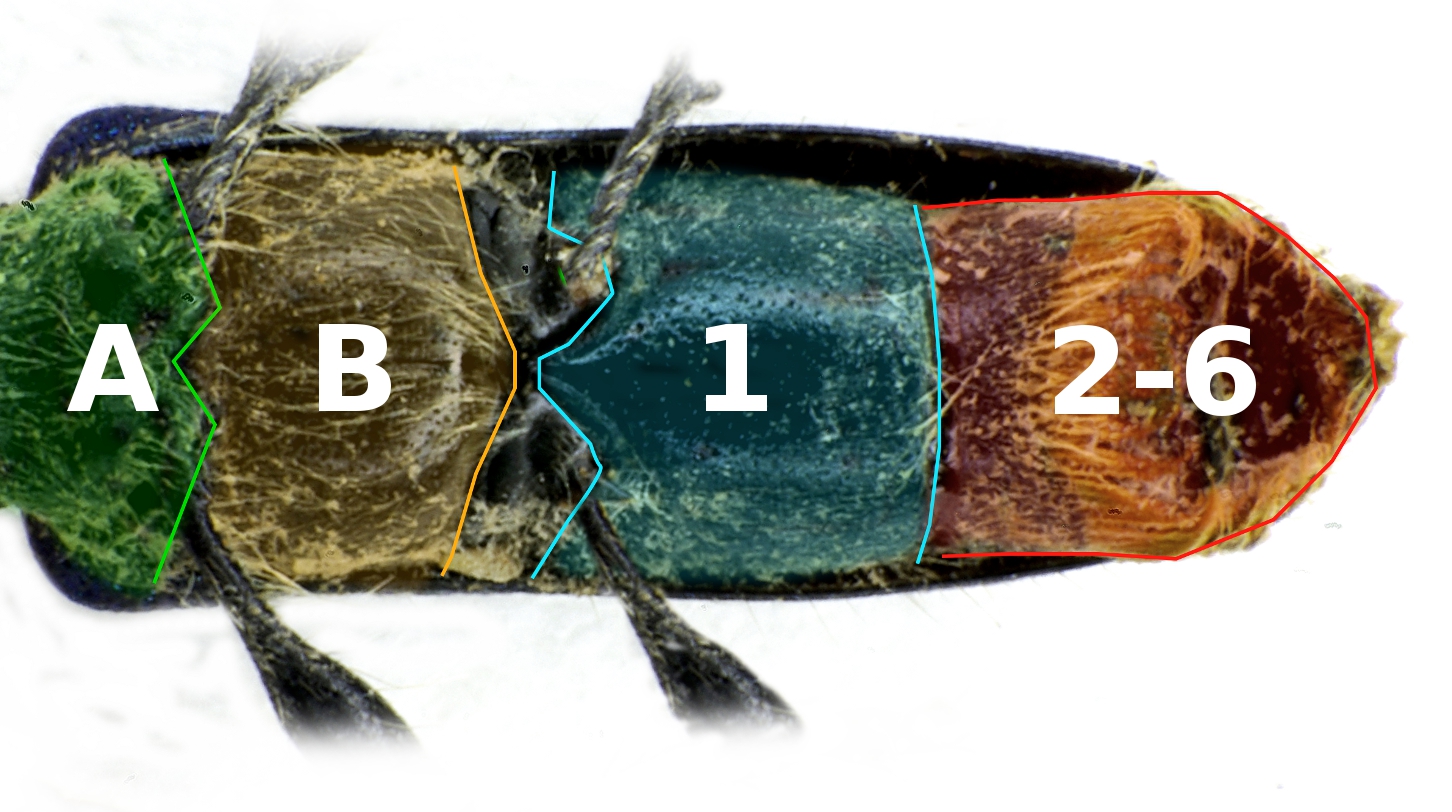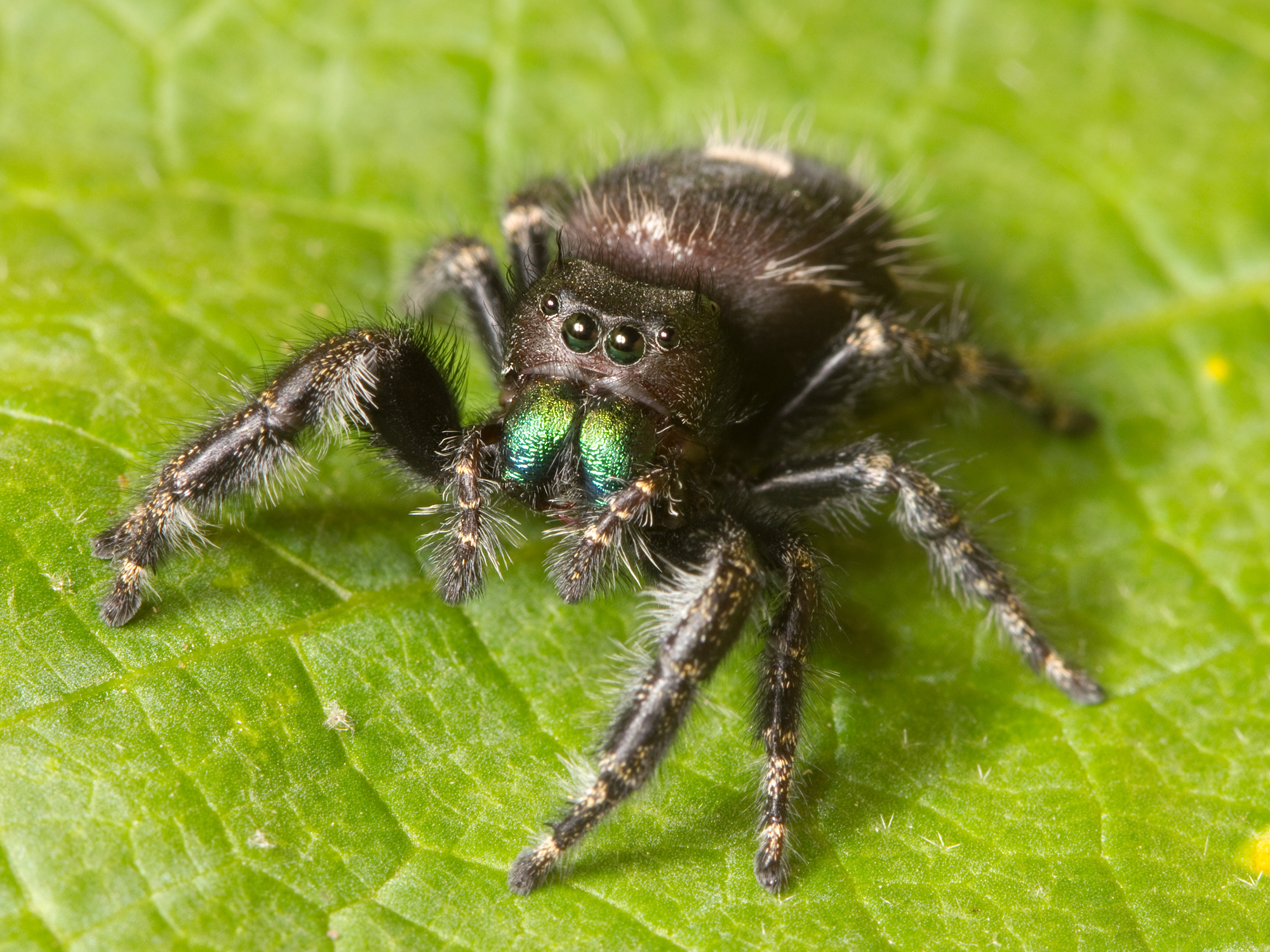|
Selenogyrus Caeruleus
''Selenogyrus caeruleus'' is a species of tarantula (family Theraphosidae, subfamily SelenogyrinaeSmith, A. M. (1990). ''Baboon spiders: Tarantulas of Africa and the Middle East''. Fitzgerald Publishing, London, pp. 1-142) native to Sierra Leone. Characteristics ''Selenogyrus caeruleus'' has characteristic colouration; grey brown with metallic blue reflections. The Arthropod mouthpart#Labium, labio- sternum mounds are weakly defined and the stridulating organ on the inner side of the chelicerae is present and formed of long clavate (scimitar shaped) setae. The tarsal scopulae are separated by a band of setae. It is 44 mm long. Metatarsal and tarsal segments of legs 3 and 4 are heavily spined. The female's spermatheca The spermatheca (pronounced plural: spermathecae ), also called receptaculum seminis (plural: receptacula seminis), is an organ of the female reproductive tract in insects, e.g. ants, bees, some molluscs, oligochaeta worms and certain other ...e are ... [...More Info...] [...Related Items...] OR: [Wikipedia] [Google] [Baidu] |
Tarantula
Tarantulas comprise a group of large and often hairy spiders of the family Theraphosidae. , 1,040 species have been identified, with 156 genera. The term "tarantula" is usually used to describe members of the family Theraphosidae, although many other members of the same infraorder ( Mygalomorphae) are commonly referred to as "tarantulas" or "false tarantulas". Some of the more common species have become popular in the exotic pet trade. Many New World species kept as pets have setae known as urticating hairs that can cause irritation to the skin, and in extreme cases, cause damage to the eyes. Overview Like all arthropods, the tarantula is an invertebrate that relies on an exoskeleton for muscular support.Pomeroy, R. (2014, February 4). Pub. Real Clear Science, "Spiders, and Their Amazing Hydraulic Legs and Genitalia". Retrieved October 13, 2019, from https://www.realclearscience.com/blog/2013/02/spiders-their-amazing-hydraulic-legs-and-genitals.html. Like other Arachn ... [...More Info...] [...Related Items...] OR: [Wikipedia] [Google] [Baidu] |
Selenogyrinae
The Selenogyrinae are a subfamily of tarantulas found in Africa and Asia."Family: Theraphosidae Thorell, 1869" ''World Spider Catalog''. NMBE. Retrieved June, 2016. Characteristics The Selenogyrinae are characterized by a unique stridulating organ situated between the e, which consists of two very similar rows of hair. In '' Annandaliella'', this is reduced.Hirst, A. S. (1908)[...More Info...] [...Related Items...] OR: [Wikipedia] [Google] [Baidu] |
Sierra Leone
Sierra Leone,)]. officially the Republic of Sierra Leone, is a country on the southwest coast of West Africa. It is bordered by Liberia to the southeast and Guinea surrounds the northern half of the nation. Covering a total area of , Sierra Leone has a tropical climate, with diverse environments ranging from savanna to rainforests. The country has a population of 7,092,113 as of the 2015 census. The capital and largest city is Freetown. The country is divided into five administrative regions, which are subdivided into 16 districts. Sierra Leone is a constitutional republic with a unicameral parliament and a directly elected president serving a five-year term with a maximum of two terms. The current president is Julius Maada Bio. Sierra Leone is a secular nation with the constitution providing for the separation of state and religion and freedom of conscience (which includes freedom of thoughts and religion). Muslims make up about three-quarters of the population, t ... [...More Info...] [...Related Items...] OR: [Wikipedia] [Google] [Baidu] |
Arthropod Mouthpart
The mouthparts of arthropods have evolved into a number of forms, each adapted to a different style or mode of feeding. Most mouthparts represent modified, paired appendages, which in ancestral forms would have appeared more like legs than mouthparts. In general, arthropods have mouthparts for cutting, chewing, piercing, sucking, shredding, siphoning, and filtering. This article outlines the basic elements of four arthropod groups: insects, myriapods, crustaceans and chelicerates. Insects are used as the model, with the novel mouthparts of the other groups introduced in turn. Insects are not, however, the ancestral form of the other arthropods discussed here. Insects Insect mouthparts exhibit a range of forms. The earliest insects had chewing mouthparts. Specialisation includes mouthparts modified for siphoning, piercing, sucking and sponging. These modifications have evolved a number of times. For example, mosquitoes (which are flies) and aphids (which are bugs) ... [...More Info...] [...Related Items...] OR: [Wikipedia] [Google] [Baidu] |
Sternum (arthropod Anatomy)
The sternum (pl. "sterna") is the ventral portion of a segment of an arthropod thorax or abdomen. In insects, the sterna are usually single, large sclerites, and external. However, they can sometimes be divided in two or more, in which case the subunits are called sternites, and may also be modified on the terminal abdominal segments so as to form part of the functional genitalia, in which case they are frequently reduced in size and development, and may become internalized and/or membranous. For a detailed explanation of the terminology, see Kinorhynchs have tergal and sternal plates too, though seemingly not homologous with those of arthropods.Sørensen, M. V. et al. Phylogeny of Kinorhyncha based on morphology and two molecular loci. PLoS One 10, 1–33 (2015). Ventrites are externally visible sternites. Usually the first sternite is covered up, so that vertrite numbers do not correspond to sternid numbers. The term is also used in other arthropod groups such as crustacea ... [...More Info...] [...Related Items...] OR: [Wikipedia] [Google] [Baidu] |
Chelicera
The chelicerae () are the mouthparts of the subphylum Chelicerata, an arthropod group that includes arachnids, horseshoe crabs, and sea spiders. Commonly referred to as " jaws", chelicerae may be shaped as either articulated fangs, or similarly to pincers. Some chelicerae, such as those found on nearly all spiders, are hollow and contain (or are connected to) venom glands, and are used to inject venom into prey or a perceived threat. In '' Pisaurina mira'', also known as the nursery web spider, the chelicerae are utilized to snatch the prey once it becomes within reach, facilitating the "sit-and-wait ambush predator" behavior. Both pseudoscorpions and harvestmen have structures on their chelicerae that are used for grooming (papillae in pseudoscorpions, cheliceral teeth in Opiliones). Types Chelicerae can be divided into three kinds: jackknife chelicerae, scissor chelicerae, and 3-segmented chelate chelicerae. Jackknife chelicerae The jackknife chelicera is subchelate (wit ... [...More Info...] [...Related Items...] OR: [Wikipedia] [Google] [Baidu] |
Scimitar
A scimitar ( or ) is a single-edged sword with a convex curved blade associated with Middle Eastern, South Asian, or North African cultures. A European term, ''scimitar'' does not refer to one specific sword type, but an assortment of different Eastern curved swords inspired by types introduced to the Middle East by Central Asian ghilmans. These swords include the Persian shamshir (the origin of the word scimitar), the Arab saif, the Indian talwar, the North African nimcha, and the Turkish kilij. All such swords are originally derived from earlier curved swords developed in Turkic Central Asia (Turkestan). Etymology The English term ''scimitar'' is attested from the mid-16th century and derives from either the Middle French ''cimeterre'' (15th century) or from the Italian ''scimitarra''. The ultimate source of these terms is corruptions of the Persian ''shamshir.'' ''Scimitar'' became used to describe all curved oriental blades, in contrast to the straight and double edged ... [...More Info...] [...Related Items...] OR: [Wikipedia] [Google] [Baidu] |
Seta
In biology, setae (singular seta ; from the Latin word for "bristle") are any of a number of different bristle- or hair-like structures on living organisms. Animal setae Protostomes Annelid setae are stiff bristles present on the body. They help, for example, earthworms to attach to the surface and prevent backsliding during peristaltic motion. These hairs make it difficult to pull a worm straight from the ground. Setae in oligochaetes (a group including earthworms) are largely composed of chitin. They are classified according to the limb to which they are attached; for instance, notosetae are attached to notopodia; neurosetae to neuropodia. Crustaceans have mechano- and chemosensory setae. Setae are especially present on the mouthparts of crustaceans and can also be found on grooming limbs. In some cases, setae are modified into scale like structures. Setae on the legs of krill and other small crustaceans help them to gather phytoplankton. It captures them and allow ... [...More Info...] [...Related Items...] OR: [Wikipedia] [Google] [Baidu] |
Arthropod Leg
The arthropod leg is a form of jointed appendage of arthropods, usually used for walking. Many of the terms used for arthropod leg segments (called podomeres) are of Latin origin, and may be confused with terms for bones: ''coxa'' (meaning hip, plural ''coxae''), ''trochanter'', ''femur'' (plural ''femora''), ''tibia'' (plural ''tibiae''), ''tarsus'' (plural ''tarsi''), ''ischium'' (plural ''ischia''), ''metatarsus'', ''carpus'', ''dactylus'' (meaning finger), ''patella'' (plural ''patellae''). Homologies of leg segments between groups are difficult to prove and are the source of much argument. Some authors posit up to eleven segments per leg for the most recent common ancestor of extant arthropods but modern arthropods have eight or fewer. It has been argued that the ancestral leg need not have been so complex, and that other events, such as successive loss of function of a ''Hox''-gene, could result in parallel gains of leg segments. In arthropods, each of the leg segments ... [...More Info...] [...Related Items...] OR: [Wikipedia] [Google] [Baidu] |
Scopulae
Scopulae, or scopula pads, are dense tufts of hair at the end of a spiders's legs. They are found mostly on hunting spiders, especially Lycosidae and Salticidae. Scopulae consist of microscopic hairs, known as setae, which are each covered in even smaller hairs called setules or "end feet", resulting in a large contact area. When the scopulae are splayed out and placed against a surface, remarkable adhesion is produced due to the accumulation of adhesion of each individual setule interacting with a substrate. The adhesion may be due to the excretion of liquid from adhesive pads, although setae can adhere in both dry and wet modes. This enables spiders with scopulae to climb even sheer, smooth surfaces such as glass. The adhesion is so great that the spider could grip using this force and support 170 times its own weight. Possible physical mechanisms may include capillary, electrostatic, viscous, or Van der Waals force. (Niederegger et al 2002; Betz and Kölsch, 2004) Scopulae hav ... [...More Info...] [...Related Items...] OR: [Wikipedia] [Google] [Baidu] |
Spermatheca
The spermatheca (pronounced plural: spermathecae ), also called receptaculum seminis (plural: receptacula seminis), is an organ of the female reproductive tract in insects, e.g. ants, bees, some molluscs, oligochaeta worms and certain other invertebrates and vertebrates. Its purpose is to receive and store sperm from the male or, in the case of hermaphrodites, the male component of the body. Spermathecae can sometimes be the site of fertilization when the oocytes are sufficiently developed. Some species of animal have multiple spermathecae. For example, certain species of earthworms have four pairs of spermathecae—one pair each in the 6th, 7th, 8th, and 9th segments. The spermathecae receive and store the spermatozoa of another earthworm during copulation. They are lined with epithelium and are variable in shape: some are thin, heavily coiled tubes, while others are vague outpocketings from the main reproductive tract. It is one of the many variations in sexual repro ... [...More Info...] [...Related Items...] OR: [Wikipedia] [Google] [Baidu] |
Selenogyrus Austini
''Selenogyrus austini'' is a theraphosid spider. As of February 2016, it is a member of the selenogyrinae. It is native to Sierra Leone.''Selenogyrus austini'' Smith, 1990 ''World Spider Catalog''. Natural History Museum of Bern. Retrieved February 11, 2016. Etymology The specific name ''"austini"'' is in honour of the collector of the type specimens, Mr. E. E. Austin.Characteristics ''S. austini'' has a characteristic crescent shaped layout of the granules on the Arthropod mouthpart#Labium, labium, and also has unique layout of the labio- |







